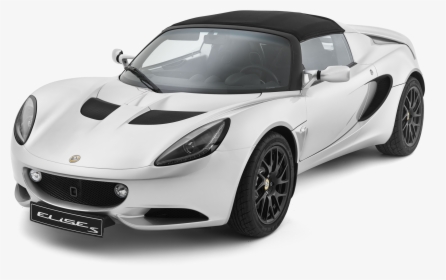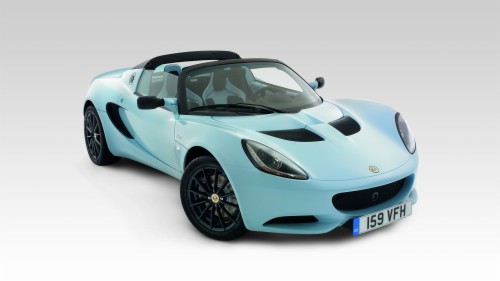Lotus Vehicles: A Tradition of Lightweight Execution and Designing Greatness
Lotus Vehicles is a famous English auto maker praised for its mastery in delivering lightweight, elite execution sports vehicles. The brand's obligation to development, designing accuracy, and driving immaculateness has solidified its status as a huge player in the car business. Established in 1952 by Colin Chapman, Lotus has a rich history set apart by hustling wins, famous plans, and a constant quest for auto greatness. This profound plunge into Lotus Vehicles will investigate its starting points, key models, mechanical advancements, and the brand's effect on the universe of sports vehicles.
1. Beginnings and Establishing Reasoning
Lotus Vehicles was laid out by Colin Chapman, a visionary specialist whose way of thinking of "adding daintiness" turned into the foundation of the organization's plan ethos. Chapman accepted that decreasing a vehicle's weight was the best method for upgrading its exhibition, taking care of, and effectiveness. This standard prompted the advancement of probably the most spry and responsive games vehicles in car history.
The organization's most memorable vehicle, the Lotus Imprint I, was worked in 1948 by Chapman in his carport. It depended on an old Austin 7 and was intended to contend in neighborhood preliminaries. The vehicle's lightweight development and imaginative designing grabbed the eye of the motorsport local area, laying the foundation for Lotus' future achievement.
By 1952, Chapman authoritatively established Lotus Designing Ltd., and the brand immediately acquired a standing for creating vehicles that were quick as well as dealt with incredibly well. The organization's emphasis on weight decrease, streamlined features, and high level materials turned into a sign of its plans, separating Lotus from different producers.
2. Notorious Models and Achievements
Throughout the long term, Lotus has created a progression of unbelievable games vehicles that have become benchmarks in their separate fragments. The absolute most notable Lotus models include:
- Lotus Seven (1957-1972):
The Lotus Seven is maybe the most famous of all Lotus vehicles. It was a lightweight, open-top games vehicle that turned into an image of driving immaculateness. The Seven's basic plan and moderate methodology made it a #1 among driving lovers. Indeed, even after Lotus quit creating the Seven, it kept on living on through Caterham Vehicles, which gained the privileges to the plan.
- Lotus Spirit (1962-1973):
The Energy was a progressive games vehicle that included a fiberglass body and a spine skeleton, making it extraordinarily light and coordinated. It was quite possibly the earliest vehicle to highlight a four-wheel free suspension framework, setting new norms for ride solace and dealing with. The Energy's plan and designing developments affected numerous different vehicles, including the Mazda MX-5 Miata.
- Lotus Esprit (1976-2004):
The Esprit was a striking mid-motor supercar planned by popular Italian creator Giorgetto Giugiaro. Known for its wedge-molded plan, the Esprit turned into a symbol of the 1970s and 1980s. It acquired further popularity through appearances in James Bond films, prominently The Covert operative Who Adored Me and For Your Eyes As it were. The Esprit developed over its long creation run, with renditions like the Super Esprit and Esprit V8 conveying noteworthy execution.
- Lotus Elise (1996-present):
The Elise denoted a huge rebound for Lotus during the 1990s. It included an aluminum undercarriage and a lightweight fiberglass body, weighing a little more than 700 kg (1,543 lbs). The Elise was a masterclass in dealing with and readiness, making it a number one among track devotees. It was controlled by a scope of motors, from the first 1.8-liter Meanderer K-Series to the supercharged Toyota motors in later models. The Elise's prosperity settled Lotus monetarily and stays one of the brand's most darling models.
- Lotus Evora (2009-present):
The Evora is an additional refined and flexible games vehicle that offers a harmony between everyday ease of use and elite execution driving. It includes a mid-mounted V6 motor, either normally suctioned or supercharged, giving more than adequate power and an invigorating driving encounter. The Evora is intended for the people who want the embodiment of a Lotus sports vehicle with added solace and reasonableness.
- Lotus Emira (2021-present):
The Emira is the furthest down the line expansion to the Lotus arrangement, addressing the brand's change into the advanced period. It joins the conventional Lotus center around lightweight development and taking care of accuracy with contemporary plan and innovation. The Emira is fueled by either a turbocharged 2.0-liter inline-four motor from AMG or a supercharged 3.5-liter V6 from Toyota, making it a flexible and invigorating choice for lovers.
3. Mechanical Developments and Designing Greatness
Lotus has forever been at the front of auto designing, with a solid spotlight on decreasing weight and improving execution. The organization spearheaded the utilization of lightweight materials, like aluminum and carbon fiber, some time before they became industry norms. A portion of the prominent mechanical developments presented by Lotus include:
- Spine Case:
The spine suspension was a lightweight at this point unbending construction that turned into a sign of Lotus vehicles. It was first presented in the Lotus Spirit and was subsequently utilized in the Esprit and different models. The plan decreased load while keeping up with primary honesty, adding to the vehicle's superb taking care of attributes.
- Dynamic Suspension:
During the 1980s, Lotus fostered a high level dynamic suspension framework that was utilized in Equation 1 dashing. This framework permitted the vehicle to keep up with ideal ride level and suspension settings, further developing grasp and strength. The innovation was subsequently adjusted for street vehicles, exhibiting Lotus' capacity to move dashing developments to purchaser vehicles.
- Optimal design:
Lotus has consistently put areas of strength for an on streamlined features, with a large number of its vehicles including progressed streamlined plans to improve downforce and lessen drag. The Lotus Elise, for instance, includes a level underbody and back diffuser to enhance wind stream and further develop soundness at high velocities.
4. Hustling Legacy and Motorsport Achievement
Lotus has a rich motorsport history, with critical accomplishments in Equation 1, sports vehicle dashing, and revitalizing. The brand's contribution in hustling started during the 1950s and 1960s, where it immediately became known for its creative plans and designing ability.
- Recipe 1 Strength:
Lotus made its Equation 1 presentation in 1958, and by the 1960s, it was quite possibly of the best group on the lattice. Under the initiative of Colin Chapman, Lotus came out on top for numerous titles with unbelievable drivers like Jim Clark, Graham Slope, and Ayrton Senna. The Lotus 25, 49, and 72 are probably the most famous F1 vehicles, known for their inventive utilization of streamlined features and lightweight development.
- Imaginative Plans:
Lotus presented a few noteworthy innovations in Recipe 1, including the monocoque skeleton, ground-impact optimal design, and dynamic suspension. These advancements not just added to Lotus' prosperity on the track yet in addition impacted the plan of current F1 vehicles.
- Perseverance and Mobilizing:
Lotus has additionally contended in perseverance dashing, with vehicles like the Lotus 11, which made progress at occasions like the 24 Hours of Le Monitors. The Lotus Cortina, a joint effort among Lotus and Portage, turned into a predominant power in energizing and passenger vehicle hustling during the 1960s.
5. The Fate of Lotus: Embracing Charge
As the car business shifts towards zap, Lotus is adjusting to these progressions while remaining consistent with its center standards of lightweight execution and driving delight. The brand has reported plans to progress to electric vehicles (EVs), with models like the Lotus Evija, an all-electric hypercar, driving the way.
- Lotus Evija:
The Evija is a restricted creation electric hypercar that addresses the zenith of Lotus designing. With an objective result of 2,000 strength and a load of under 1,700 kg, the Evija is intended to convey stunning execution and nimbleness. Its high level optimal design and lightweight development are a demonstration of Lotus' obligation to pushing the limits of car innovation.
- Impending Electric Models:
Lotus has declared plans to present a scope of electric vehicles, including SUVs and sports vehicles, under its Vision80 procedure. The organization expects to turn into a forerunner in the electric games vehicle fragment while keeping up with its emphasis on driving elements and development.
6. End: The Getting through Tradition of Lotus Vehicles
Lotus Vehicles has stayed an image of designing splendor, lightweight execution, and driving virtue for north of seventy years. The brand's obligation to development, both on the track and in street vehicles, has made a permanent imprint on the auto business. As Lotus embraces zap and new advancements, it keeps on regarding the tradition of its pioneer, Colin Chapman, by conveying vehicles that motivate enthusiasm and fervor in driving lovers all over the planet.



0 Comments